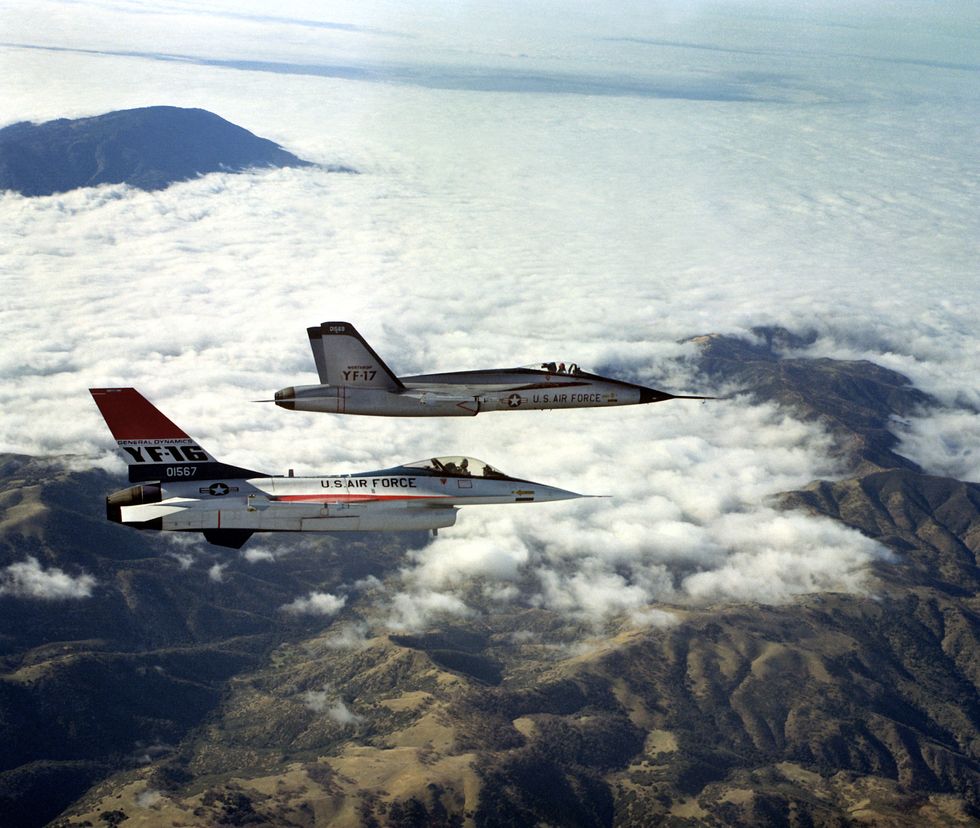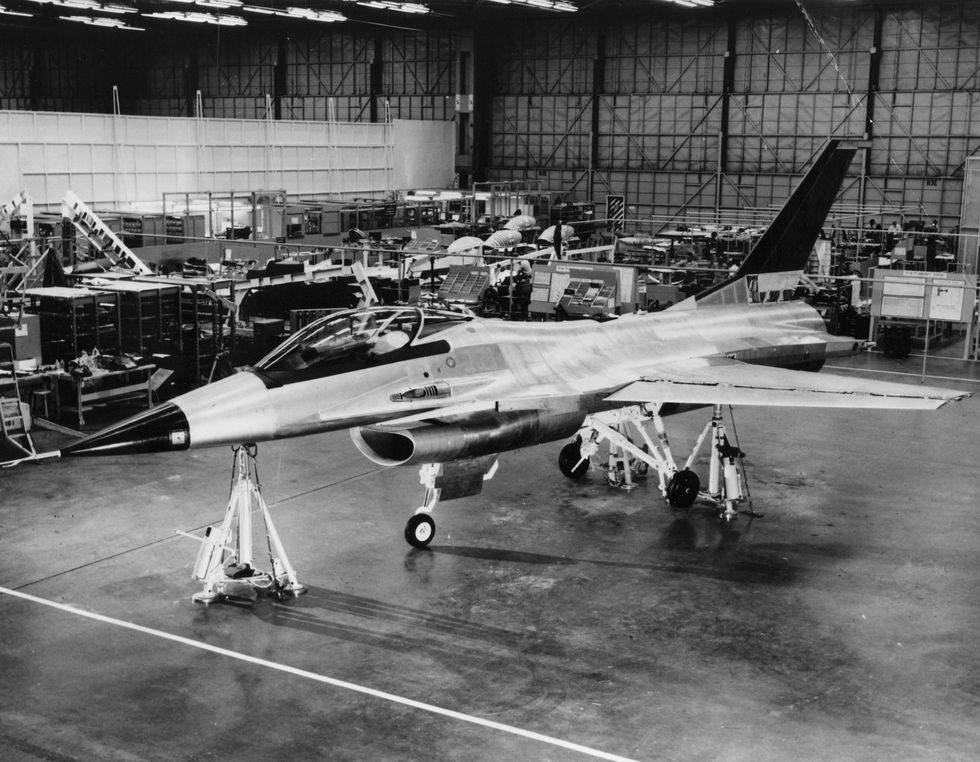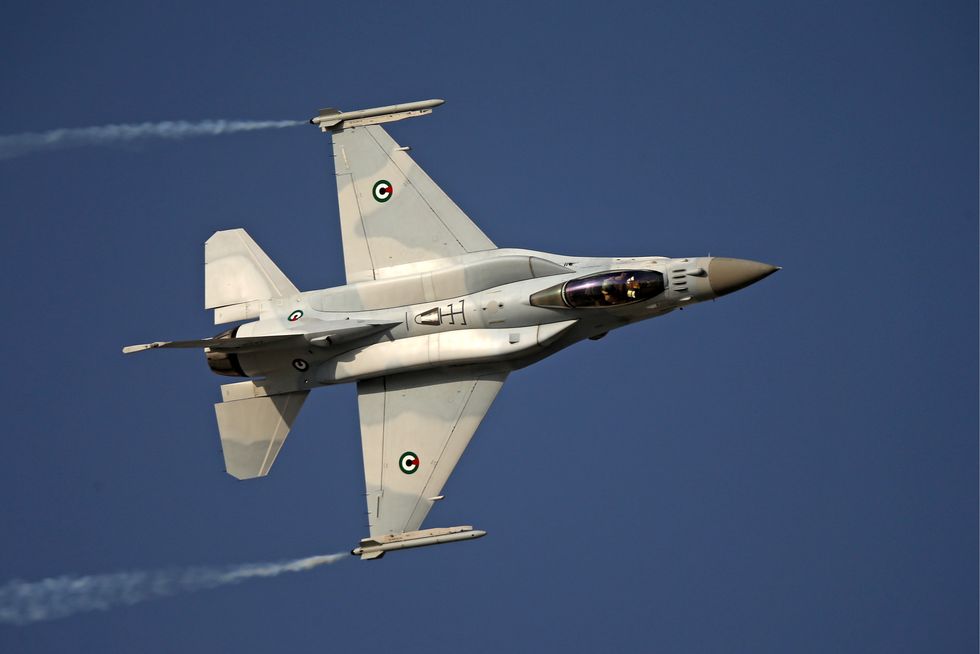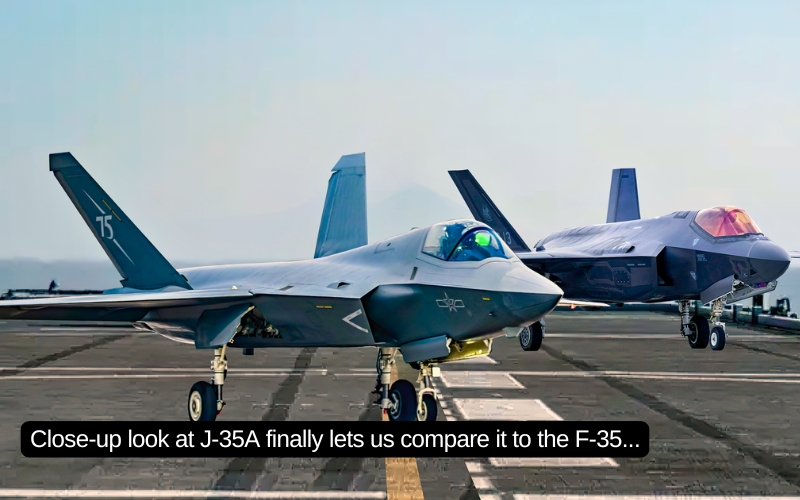The F-16 wasn’t supposed to take off that day—but it very much did.

. The YF-16, the aircraft that eventually lead to the F-16 fighter, flew for the first time 46 years ago this week.
. The flight was actually accidental, with the pilot taking off rather that crashing the plane.
. The YF-16, of which there was only one, flew for six minutes before safely landing.
Forty six years ago this week the legendary F-16 Fighting Falcon fighter jet got off to a wobbly start. The prototype YF-16 jet nearly crashed during high speed ground tests, an incident that could have killed the pilot and quite possibly the aircraft program itself. The pilot skillfully prevented disaster by taking the airplane into the air for an impromptu first flight—where it stayed for six minutes.

In the early 1970s, the U.S. Air Force issued a requirement for an inexpensive, highly maneuverable lightweight fighter jet to complement the F-15 Eagle. Two companies answered the call: General Dynamics, with its YF-16 prototype, and Northrop, with its YF-17. The Air Force would eventually select the F-16, naming it the Fighting Falcon, while the U.S. Navy and Marine Corps would select a derivative of the YF-17, naming it the F/A-18 Hornet.
By December 1973, General Dynamics rolled out the first YF-16 prototype, and first flight was scheduled for February 1974. In the meantime, the aircraft was scheduled to perform high-speed ground tests throughout the month of January. It didn’t work out that way.

On January 20, 1974, test pilot Phil Oestricher was taking the YF-16 prototype down the runway at Edwards Air Force Base when things went, well, not according to plan. As the Seattle Post Intelligencer writes:
As the aircraft accelerated rapidly down the runway, Oestricher raised the nose slightly and applied aileron control to check lateral response. To the pilot’s surprise, the aircraft entered a roll oscillation with amplitudes so high that the left wing and right stabilator alternately struck the surface of the runway.
As Oestricher desperately fought to maintain control of his wild steed, the situation became increasingly dire as the YF-16 began to veer to the left. Realizing that going into the weeds at high speed was a prescription for disaster, the test pilot quickly elected to jam the throttle forward and attempt to get the YF-16 into the air. The outcome of this decision was not immediately obvious as Oestricher continued to struggle for control while waiting for his airspeed to increase to the point that there was lift sufficient for flight.
Oestricher finally got the airplane airborne, flying for six minutes before landing the jet. The aircraft’s official first flight took place on February 2, 1974, again with Phil Oestricher at the controls. He reached 400 mph and 30,000 feet.

Although the accidental takeoff had a happy ending, it could have very easily gone differently. Oestricher’s jet was the only YF-16 in existence at the time, and the U.S. Air Force might have lost interest in it had it crashed. Alternately, General Dynamics might have declined to continue developing the aircraft, leaving the YF-17 Cobra the sole competitor. General Dynamics—now Lockheed Martin—built over 4,600 F-16s over the last 40 years and had the YF-16 been cancelled air forces all over the world might look very different right now.










